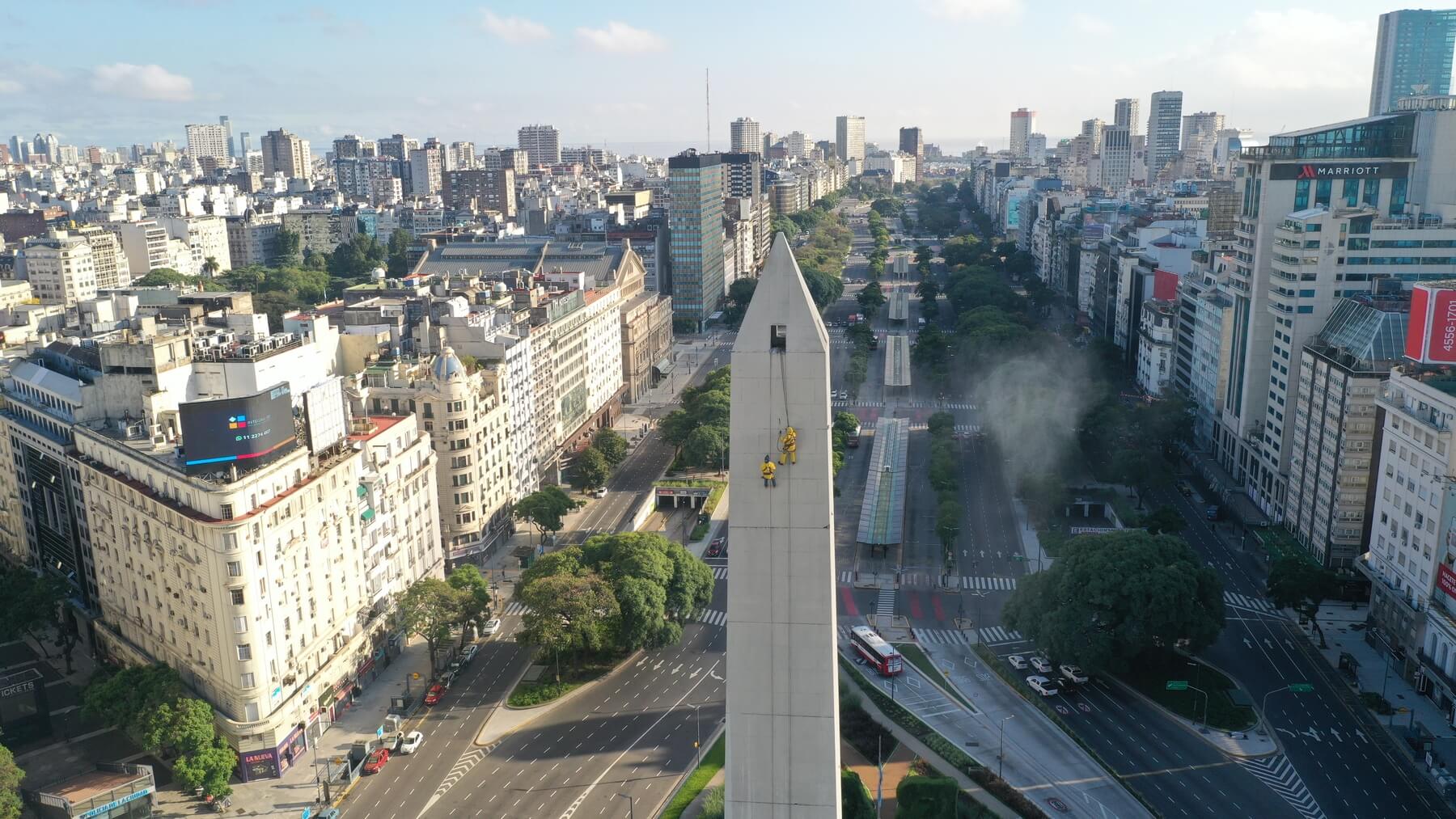ISABEL RUBIO ARROYO | Tungsteno
The Eiffel Tower is to Paris what the Statue of Liberty is to New York—or what the Obelisk is to the city of Buenos Aires. This historic reinforced concrete monument weighs 170 tonnes and took just 31 days to build. We investigate the interior of this mega-structure and how it became one of Argentina’s most emblematic monuments.
An obelisk built in record time
This work by the architect Alberto Prebisch, one of the main exponents of Argentine modernism, was built in record time by the German company G.E.O.P.E. – Siemens Bauunion – Grün & Bilfinger. Work on the obelisk began on 20 March 1936 and was completed in only 31 days. A total of 157 workers were involved in the construction of the 67.5 metre high structure, which cost around 200,000 Argentine pesos at the time.
The famous obelisk has only one entrance door. Inside, there is a ladder with 206 steps—and seven resting platforms—and at the top, a viewpoint with four windows and a lightning rod at the tip of the monument. Although it is not open to the public, a reporter from the Argentine newspaper Clarín managed to climb to the top and described the adventure as follows: "It took me 16 minutes to reach the top, with three breaks to catch my breath and recover from the concentration required."
The obelisk was inaugurated on 23 May 1936 to commemorate the 400th anniversary of the first founding of Buenos Aires in 1536. It was erected on the site where the national flag was first raised in the city, in what is now Plaza de la República. Its location is strategic, at the intersection of two famous avenues: 9 de Julio, one of the widest in the world, and Corrientes, one of the main cultural poles of Buenos Aires.
The Obelisk is located at a strategic place in Buenos Aires. Credit: Buddha AudioVisual
A "meaningless hulk" or the symbol of Buenos Aires?
Although it is now an iconic monument of the capital, there was a time when it had its detractors. According to Clarín, the newspapers of the time described it as a "meaningless hulk" and a "disaster in retrospect". A popular verse read: "In the middle of the street/ there's a mass standing/ they call it the Obelisk/ and it's good for nothing."
It was so badly received that there were those who wanted it demolished. When some of the masonry came loose in June 1938, critics seized the opportunity to call for its destruction for "economic, aesthetic and safety reasons", according to the government of the Autonomous City of Buenos Aires. In 1939, the city council passed a law for its demolition by 23 votes to three. The mayor, Arturo Goyeneche, saved the obelisk on the grounds that it was under national jurisdiction.
The obelisk has undergone few major changes in recent decades. Apart from maintenance and painting, one of the most notable changes was in 1987, when a metal fence was erected around it to prevent graffiti and vandalism. Over time, it has become one of the main meeting places for political demonstrations, celebrations of sporting victories and commemorations of historical events.
More than 300 of litres of paint were used to restore the Obelisk in 2021. Credit: No Comment TV
While the iconic monument may have originally had its detractors, it has also had many defenders. One fan of the obelisk was the poet Baldomero Fernández Moreno, who dedicated a sonnet to the obelisk that remains immortalised at its base: "Where had the city kept/ this gleaming silver sword/ suddenly unsheathed/ and thrust into the blue sky? / Now can our gaze be lifted/ no longer crawling, repentant / we climb the stone towards the almighty Sun/ and descend, soul enriched./ Moonbeam’s ray or wind’s rending sigh/ in symbols formed, a monument on high/ forefinger, fountain, flame, towering palm./ The star above and the sparkle below,/ may the idea, the dream and the toil/ twine at your feet, o spindle."
· — —
Tungsteno is a journalism laboratory to scan the essence of innovation.
